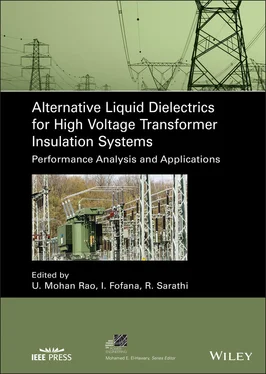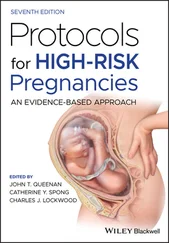1 ...7 8 9 11 12 13 ...22 1 1 Tang, Y., Zhong, J., and Liu, J. (2016). A Generation adjustment methodology considering fluctuations of loads and renewable energy sources. IEEE Transactions on Power Systems 31 (1): 125–132.
2 2 Malinowski, M., Milczarek, A., Kot, R. et al. (2015). Optimized energy‐conversion systems for small wind turbines: renewable energy sources in modern distributed power generation systems. IEEE Power Electronics Magazine 2 (3): 16–30.
3 3 Berseneff, B., Perrin, M., Quoc, T.T. et al. (2014). The significance of energy storage for renewable energy generation and the role of instrumentation and measurement. IEEE Instrumentation & Measurement Magazine 17 (2): 34–40.
4 4 Díaz, N.L., Luna, A.C., Vasquez, J.C., and Guerrero, J.M. (2017). Centralized control architecture for coordination of distributed renewable generation and energy storage in islanded AC microgrids. IEEE Transactions on Power Electronics 32 (7): 5202–5213.
5 5 Wei, W., Liu, F., Mei, S., and Hou, Y. (2015). Robust energy and reserve dispatch under variable renewable generation. IEEE Transactions on Smart Grid 6 (1): 369–380.
6 6 Wang, Z., Chen, Y., Mei, S. et al. (2017). Optimal expansion planning of isolated microgrid with renewable energy resources and controllable loads. IET Renewable Power Generation 11 (7): 931–940.
7 7 Mohan, V., Suresh, R., Singh, J.G. et al. (2017). Microgrid energy management combining sensitivities, interval and probabilistic uncertainties of renewable generation and loads. IEEE Journal on Emerging and Selected Topics in Circuits and Systems 7 (2): 262–270.
8 8 Yang, P. and Nehorai, A. (2014). Joint optimization of hybrid energy storage and generation capacity with renewable energy. IEEE Transactions on Smart Grid 5 (4): 1566–1574.
9 9 Li, N. and Hedman, K.W. (2015). Economic assessment of energy storage in systems with high levels of renewable resources. IEEE Transactions on Sustainable Energy 6 (3): 1103–1111.
10 10 Wong, S. and Pinard, J.P. (2017). Opportunities for smart electric thermal storage on electric grids with renewable energy. IEEE Transactions on Smart Grid 8 (2): 1014–1022.
11 11 Baker, K., Guo, J., Hug, G., and Li, X. (2016). Distributed MPC for efficient coordination of storage and renewable energy sources across control areas. IEEE Transactions on Smart Grid 7 (2): 992–1001.
12 12 Hill, C.A., Such, M.C., Chen, D. et al. (2012). Battery energy storage for enabling integration of distributed solar power generation. IEEE Transactions on Smart Grid 3 (2): 850–857.
13 13 Djairam, D., Morshuis, P.H.F., and Smit, J.J. (2014). A novel method of wind energy generation‐the electrostatic wind energy converter. IEEE Electrical Insulation Magazine 30 (4): 8–20.
14 14 Abdelsamad, S.F., Morsi, W.G., and Sidhu, T.S. (2015). Impact of wind‐based distributed generation on electric energy in distribution systems embedded with electric vehicles. IEEE Transactions on Sustainable Energy 6 (1): 79–87.
15 15 Wang, H. and Huang, J. (2016). Cooperative planning of renewable generations for interconnected microgrids. IEEE Transactions on Smart Grid 7 (5): 2486–2496.
16 16 Betie, A., Rao, U.M., Fofana, I. et al. (Dec. 2019). Influence of cellulose paper on gassing tendency of transformer oil under electrical discharge. IEEE Transactions on Dielectrics and Electrical Insulation 26 (6): 1729–1737.
17 17 Leila, S., Zafour, H., Rao, U.M., and Fofana, I. (2019). Regeneration of transformer insulating fluids using membrane separation technology. Energies 12 (3): 368.
18 18 Theraja, B.L. and Theraja, A.K. (2014). Electrical Technology, vol. II. New Delhi, India: S. Chand Publishers.
19 19 Kulkarni, S.V. and Khaparde, S.A. (2004). Transformer Engineering: Design and Practice. CRC Press.
20 20 ASTM (2018). D117‐18, Standard Guide for Sampling, Test Methods, and Specifications for Electrical Insulating Liquids. West Conshohocken, PA: ASTM International.
21 21 Chakravorti, S., Dey, D., and Chatterjee, B. (2013). Recent Trends in the Condition Monitoring of Transformers, 1ste. London: Springer‐Verlag.
22 22 Kassi, K.S., Fofana, I., Meghnefi, F., and Yeo, Z. (2015). Impact of local overheating on conventional and hybrid insulations for power transformers. IEEE Transactions on Dielectrics and Electrical Insulation 22 (5): 2543–2553.
23 23 Rao, U.M., Sood, Y.R., and Jarial, R.K. (2016). Physiometric and Fourier transform infrared spectroscopy analysis of cellulose insulation in blend of mineral and synthetic ester oils for transformers. IET Science, Measurement & Technology 11 (3): 297–304.
24 24 Rao, U.M., Fofana, I., Betie, A. et al. (Nov.‐Dec. 2019). Condition monitoring of in‐service oil‐filled transformers: case studies and experience. IEEE Electrical Insulation Magazine 35 (6): 33–42.
25 25 Martin, D., Saha, T., Gray, T., and Wyper, K. (2015). Determining water in transformer paper insulation: effect of measuring oil water activity at two different locations. IEEE Electrical Insulation Magazine 31 (3): 18–25.
26 26 Martin, D., Saha, T., Dee, R. et al. (2015). Determining water in transformer paper insulation: analyzing ageing transformers. IEEE Electrical Insulation Magazine 31 (5): 23–32.
27 27 Claiborne, C.C. and Pearce, H.A. (1989). Transformer fluids. IEEE Electrical Insulation Magazine 5 (4): 16–19.
28 28 Plessner, K.W. and Reynolds, E.H. (1976). New pure or blended liquids for high voltage application. CIGRE Report No. 15‐07.
29 29 Bartnikas, R. (1994). Electrical insulating liquids. In: Engineering Dielectrics, vol. 3. American Society for Testing and Materials.
30 30 Fofana, I. (2013). 50 Years in the development of insulating liquids. IEEE Electrical Insulation Magazine 29 (5): 13–25.
31 31 Rao, U.M., Fofana, I., Jaya, T. et al. (2019). Alternative dielectric fluids for transformer insulation system: research progress, challenges, and future prospects. IEEE Access 7 (1): 1–20.
32 32 Rao, U.M., Sood, Y.R., and Jarial, R.K. (2015). Review on ester based dielectric liquids for transformer insulation technology. In 2015 International Conference on Condition Assessment Techniques in Electrical Systems (CATCON).
2 Processing and Evaluation of Natural Esters
Niharika Baruah1, Rohith Sangineni1, Mrutyunjay Maharana2, and Sisir Kumar Nayak1
1 Indian Institute of Technology, Guwahati, Assam, India
2 Xi’an Jiaotong University, Shaanxi, China
Transformers are the critical elements of the electrical grid and their effective operation is vital to the health of the whole network. It is of utmost importance to sustain the continuity of supply and prevent financial losses. The mineral oil (MO) is most generally used in the transformer as the dielectric fluid alongside the solid insulation like the pressboards and kraft papers. The development of environment friendly vegetable oils (VOs) or natural ester oils (NEOs) for transformers in place of MO gives us an alternative insulation system. MO is procured from the petroleum‐based fossil fuels and will deplete in the long run. Also, the biodegradability of MO is poor and hence causes environmental concern if spillage occurs. Alternatively, NEOs are achieving prominence because of their environment friendly nature, better biodegradability, higher fire and flash points. NEOs also have thermal conductivity better than MO; however, the viscosity is higher than MO, which is a disadvantage as it prevents flowability of the oil.
NEOs are derived from plant sources and there is a variety of them available in the market. Some of them are the linseed oil, castor oil, corn oil, Pongamia pinnata oil (karanji oil), soybean oil, punna oil, neem oil, Jatropha Curcas oil, palm oil, sunflower oil, olive oil, peanut oil, cottonseed oil, rapeseed oil (canola oil), coconut oil, hazelnut oil, and mustard oil [1–8]. The experimentation with NEOs for insulation purposes dates back to the twentieth century as these oils are readily biodegradable, have higher fire points, and are sustainable. The NEO also has higher water absorption capacity than the MO. A little concern over the use of NEOs made from edible oils like peanut and sunflower is that abundant use of NEOs can lead to a food crisis; therefore, these oils should preferably be made from nonedible seeds [9].
Читать дальше












